24th October 2008 : Who Needs Enemies?
 Friday, October 24, 2008 at 02:09PM
Friday, October 24, 2008 at 02:09PM This morning, I was awoken at 5.15am by the river roaring as it came down in flood (and no, despite my recent dawn post and avowal of future good intentions, I did not get up)...not a huge fully blown, wipe-out-every-sandbank flood, but the highest of the season so far. Here it is a little later in the morning (ie when it was light)...
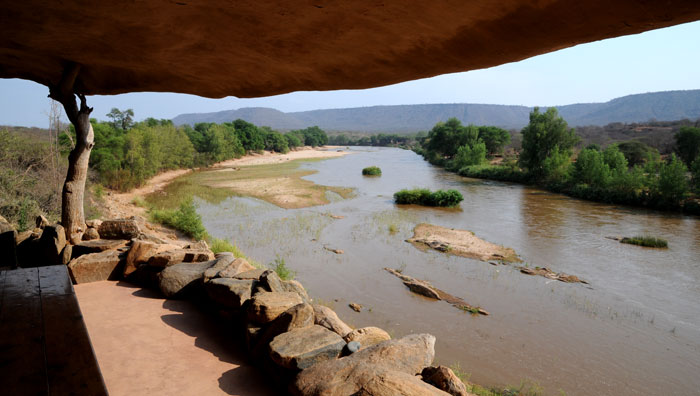 Upstream
Upstream
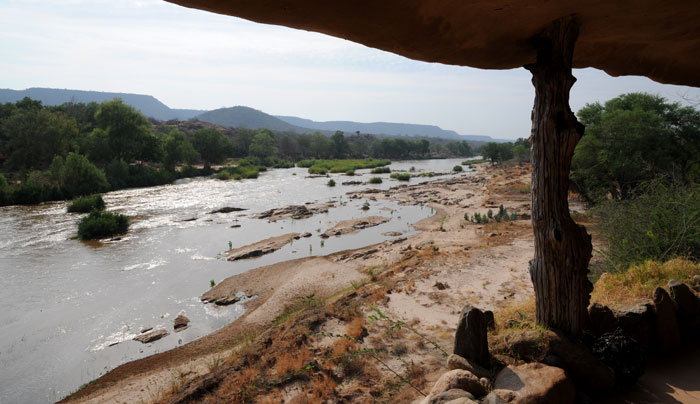 Downstream
Downstream
The waterbuck snorted in alarm at the rushing water, but were soon persuaded to come down for a drink:
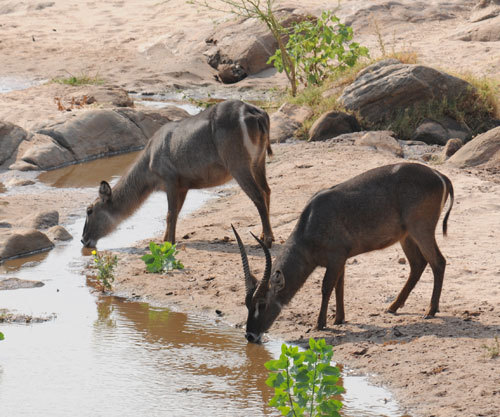
The buffalo seemed delighted, wandering deep into the water for their early morning thirst-quencher...
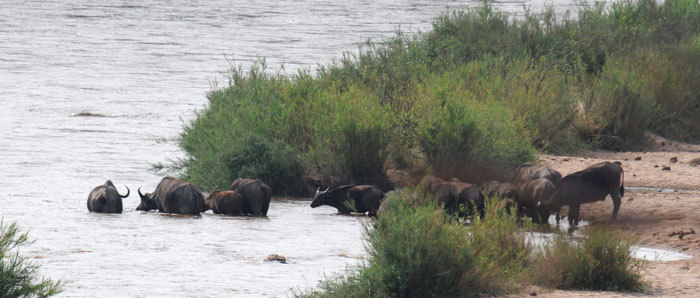
Still no rain in sight for us though, although there were black skies out beyond the kitchen today (that is to say, to the west of us) so maybe we will get a dose of our own soon. Legend/Tradition has it that the rains start on 24th October in Tsavo East - that's today! Maybe we'll get rained on tonight. The plovers seem to think so for they are mating again (but since when have they ever been reliable indicators for anything?!). The lizards seem to think so too, as they've been busy courting...or shall I say this male Agama Lizard has been busy chasing a female around, but she wants none of it, or so it seems...
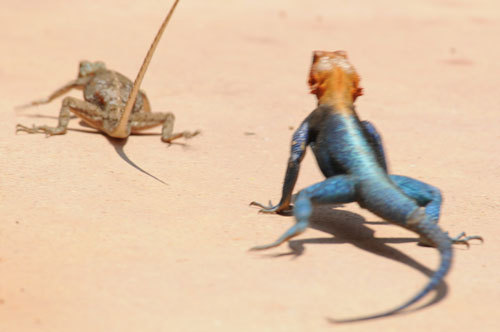
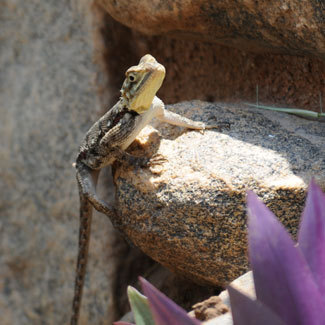
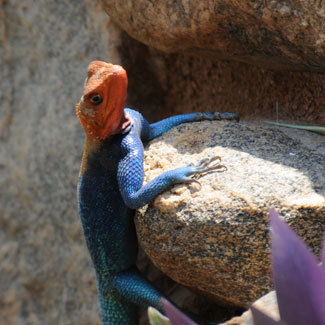 Wherever she goes, he goes...
Wherever she goes, he goes...
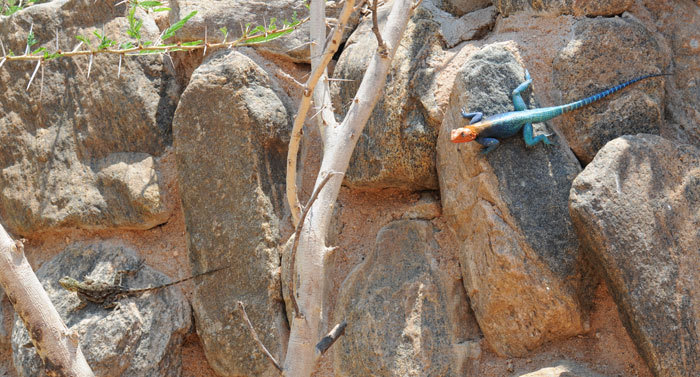
Apologies, I am getting ahead of myself here. This post was really meant to follow on from the previous one, and therefore I'd like to start with a question:
If our "poison river" was in fact no poison river at all, but just a river saturated with algae and starved of all oxygen, why then did so many of our goslings die so quickly in the following days?
On the 19th September, where we left off our previous gosling update, we still had 13 strapping young goslings growing up fast in and along the river below our house. When we awoke on the morning of the 23rd, the day the mass fish die-off seemed finally to be abating, we only had 11 goslings. Here they are, with both their parents:
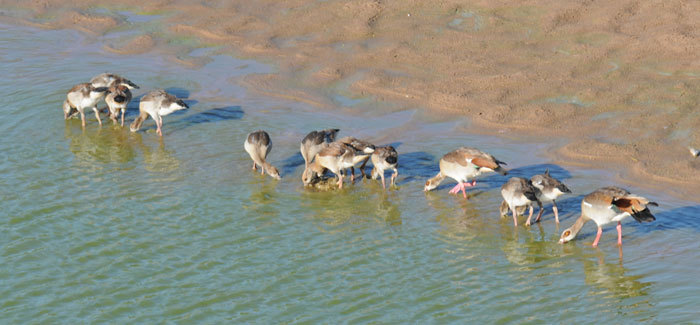
By the 25th September, we had lost another four goslings. Six down in 3 days...that's not normal. I know we always expect to lose half to two thirds of every brood between hatching and adulthood, but to lose so many so quickly just ain't right, in my book. But, right or not, we were down to seven:
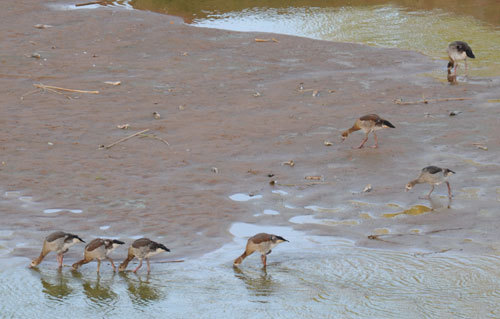
You guessed it (there's kind of a trend here, isn't there?)... On the 26th September, another one had gone. Down to six from thirteen in less than a week:
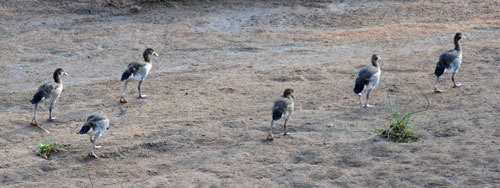
So, at this rate, you can understand how utterly disheartening it was on October 2nd to see a very sick gosling, its wings drooping and trailing, trying its best to keep pace with its siblings as they wandered amongst the dried up fish skeletons - poor brave little thing...
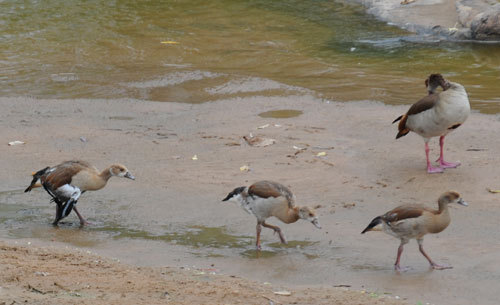
By the next morning, it was dead. We only had five goslings left in the brood. For a day or so, these ones were doing just fine, until 4th October, when another one fell ill:
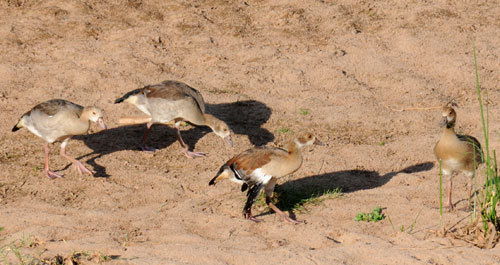
But, it seemed on this occasion that Lady Luck was on the side of our goose family (not before time, either) for the gosling recovered and to bear witness, here are the five now quite large goslings doing well on 9th October, along with their parents:
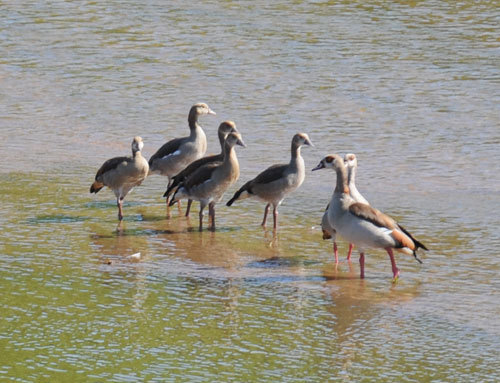
It's now almost two months since they hatched and made that epic first journey to the river as tiny fluffballs, arriving here on 10th August, their protective parents displacing the resident goose pair and their brood of goslings (one month older than our lot, to the day) which we now see further upstream, living quite happily at Hippo Bend (there's only five of them left too, down from the original twelve, but their brood diminished in number gradually, losing one gosling here to some predator, another one there, which is sad but quite normal...)
Something strange happened on October 9th. In the morning, I saw an adult goose lying at the edge of the river, just near the reed islands. All day it lay there, without moving:
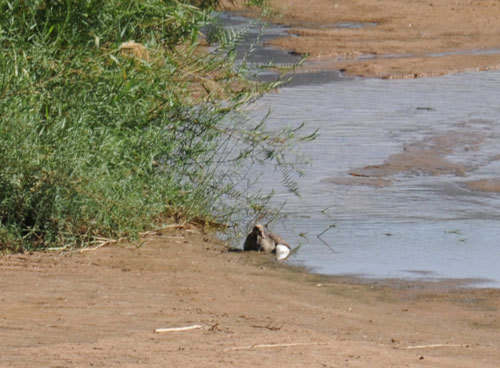
By evening, it was dead:
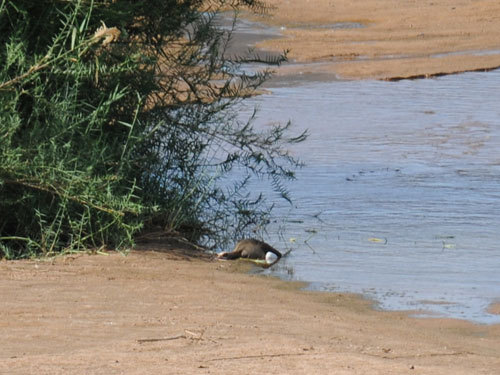
Overnight, some scavenger ate the dead goose and I thought nothing more of it, beyond thinking it was probably just one of those things...Nature gives, and Nature takes away...
Around this time, I noticed our goslings were starting to flap their wings a lot, in preparation for the next major step in their lives: flight. They do this to strengthen their wing muscles, and it's fun to watch. Here they are in pre-flight training on 11th October:
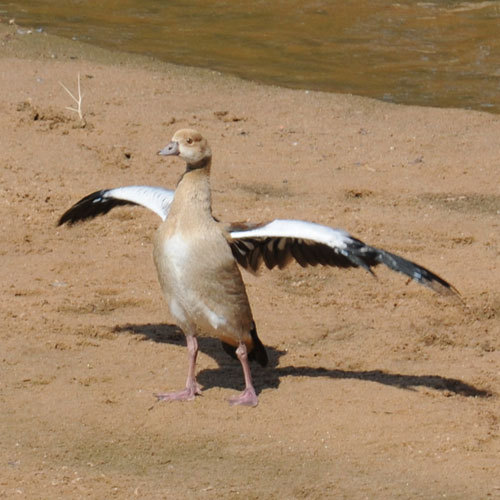
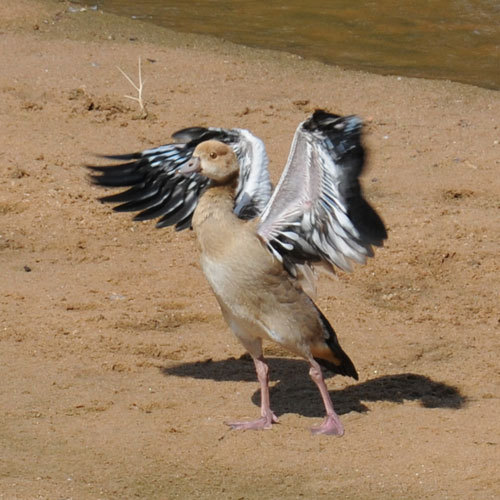
Given their recent tribulations, you can forgive me for my sense of dread when I saw this gosling, inert in a pool near the river's edge, while the rest of its siblings were some way away nibbling at the grass on the sandbank:
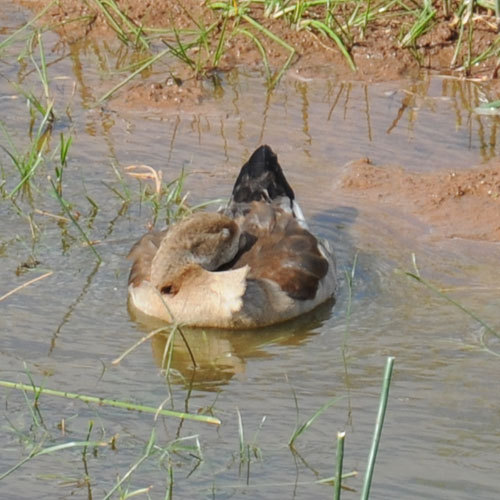
But - silly me - it was only sleeping! When the gosling woke up, it looked a little dazed and then it realised it had been left behind, so it hurried over to join the rest of the brood:
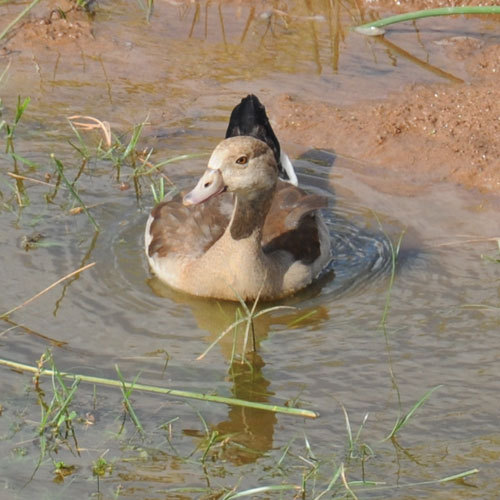
On 14th October, our five ever-growing goslings had a few close (albeit totally peaceful) encounters with some other riverine residents. Here they are sailing past a couple of dikkops (who look as dikkops always do - totally aloof):
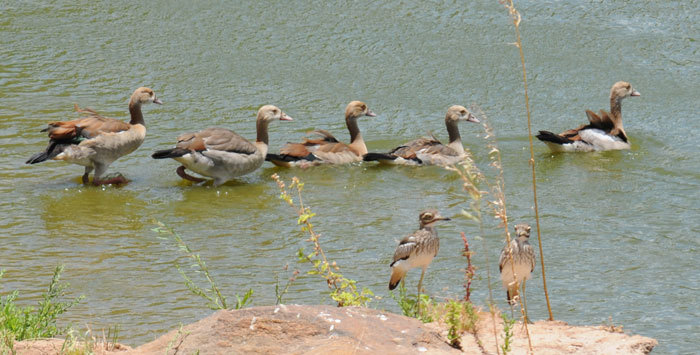
And here they are again, this time with a very fine male Impala who had brought his harem down to the river's edge to find some green vegetation:
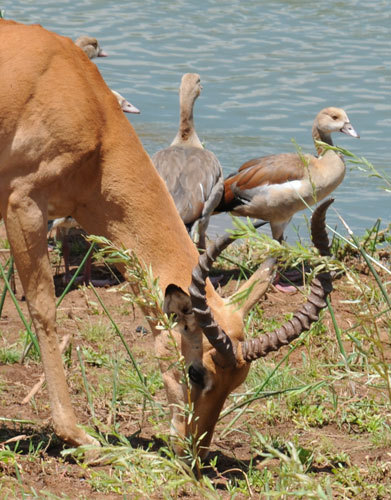
In fact, on 14th October, it seemed that the goslings had come through the worst, and had nothing more to worry about than the wind...how easily one is lulled into a false sense of security...
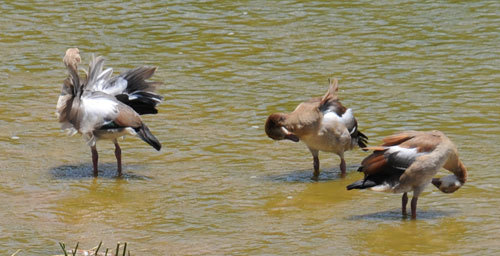
It's a good thing the goslings have been in training, for take a look at this. Later that day, I heard a wild commotion going on outside and I rushed to the door of my office, only to see one of the adult geese viciously attacking its own brood:
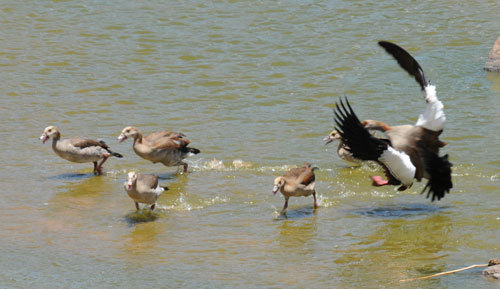
I have to assume that of the two parents, this must be the father, for to attack your own young is so anti-intuitive for a mother (and in other species, you do see the males becoming a threat to their offspring). I also know it is normal behaviour for geese parents to chase off their young - but not until they can fly and are old enough to fend for themselves. Our little chaps had only just started practicing to flap their wings! So what was going on? Either the father just had an abnormally bad headache (which endures until this day, for he is still chasing the goslings, whenever he's given the opportunity)...or he's being over-zealous in his efforts to teach the goslings to fly...or ahead of his time in chasing them from "the nest", as it were...or - and this struck me only yesterday: I wonder whether he really is their father? Doubtless, he is with their mother, but I wonder whether that adult goose we saw dying by the reed island was their father, and this aggressive goose might already have "moved in" and is their mother's new mate? We can't be sure, but this certainly would explain this unusual behaviour.
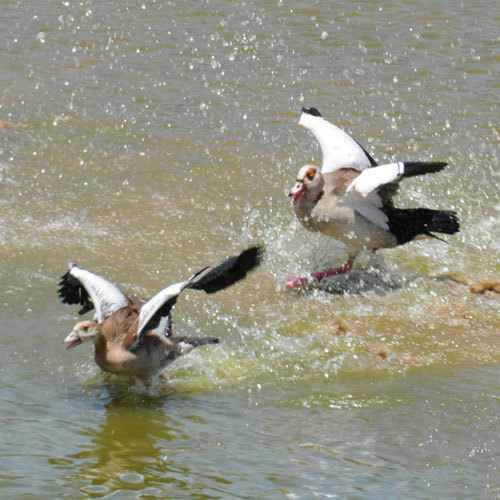
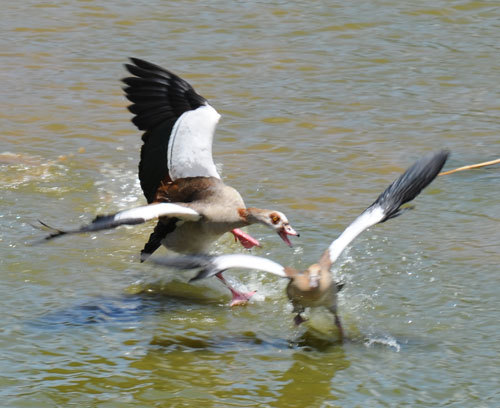
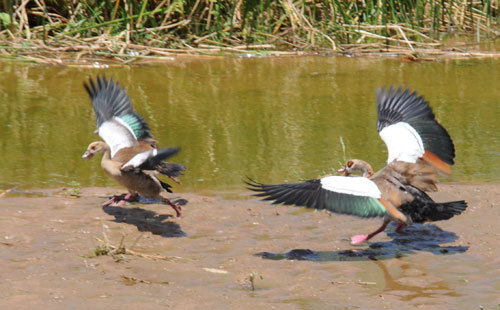 Who needs enemies when you've got a father like this?
Who needs enemies when you've got a father like this?
And what does the mother do while her little ones are being attacked? She comes noisily to the rescue, trying to place herself between the male and her goslings. The male retreats when she does so, and sheepishly wanders away, but every now and again, he cannot resist having another go - admittedly his attacks are more halfhearted when the mother goose in in the vicinity.
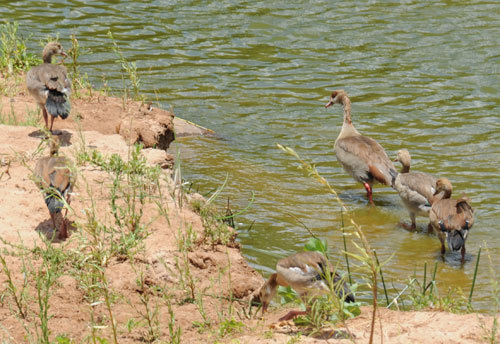 The protective mother stays close to her goslings to prevent another attack
The protective mother stays close to her goslings to prevent another attack
On 17th October, the father (if that is what he is) is still at it, terrifying the wits out of the young goslings...
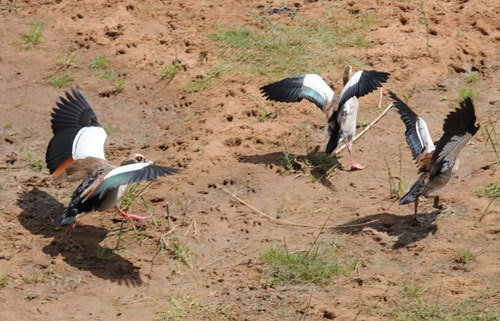
After a drama-filled few weeks, my instinct tells me, it's not over yet...so stay tuned for the next episode of "Gosling Wars"...but I do want to end on a somewhat lighter note, so here is a comical image of one of our goslings, trying to decide whether or not it wants to go for a swim - eventually it fell off the edge and its decision was made for it!
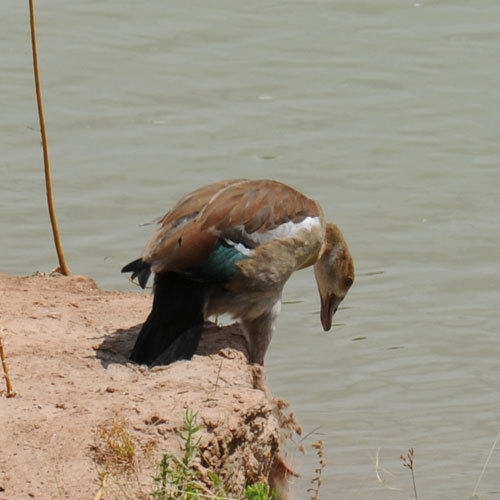
Find me elsewhere on the web:
Dezine Design Creative Hub | My Art & Photos on Gifts & Apparel | Fine Art & Photo Prints |
African Environmental Film Foundation





Reader Comments